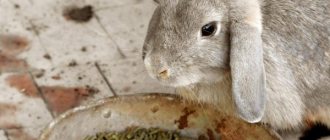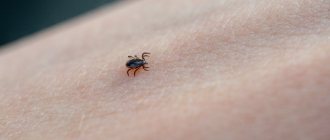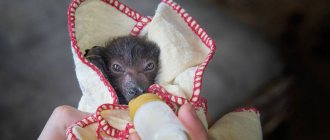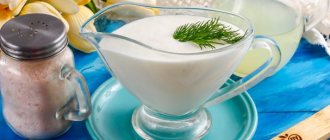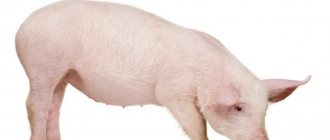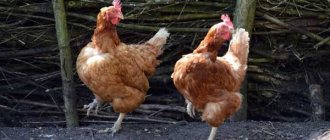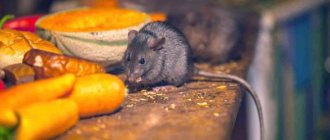Sometimes it is necessary to know the fat content of the product consumed, especially during a diet or transition to proper nutrition. After all, not everyone wants to consume store-bought products; many prefer homemade milk. Methods for determining fat content may be suitable for people who prefer to buy dairy products on the market or produce their own at home.
Milk
There are several ways to test the fat content of a dairy product, and there are even some that do not require special equipment. There are at least 6 types of measuring instruments - we will consider only two, since they are the most popular and affordable.
Butyrometers are based on:
- Measurements of specific heat capacity;
- Infrared spectroscopy;
- Dependence of the values of one of the electrical parameters of the product placed in a high-frequency field and fat content;
- Dependence of electrical conductivity on fat content;
- On the dispersion of light flux;
- On changing the speed of ultrasound.
Photoelectric butyrometer
You will need: a photoelectric butyrometer and milk. Pour the milk into a glass or other transparent container, then point the light beam emanating from the device at it. The sensor, which is one of the components of the butyrometer, measures the change in instantaneous flux density, which allows you to determine the percentage of fat content.
- Advantages of the method: does not require special care, knowledge, or effort;
- Cons: You need to purchase a butyrometer.
Ultrasonic butyrometer
Take: milk, 100 ml, thermometer (the most common one), ultrasonic butyrometer. To carry out the measurement, you need to heat the milk to 50 degrees Celsius; the temperature is measured with a thermometer. After it has heated to the desired temperature, simply lower the device into it, information about the fat content will be displayed on the display.
The operating principle of such a device is based on changing the speed of propagation, absorption or dispersion of ultrasound.
- Advantages of the method: speed, accuracy;
- Disadvantages of the method: an ultrasonic butyrometer is a rather complex device, so it is more expensive than the instrument from method 1.
Home method
You need: a narrow transparent glass, a flask or other container with a measuring scale, a ruler, a calculator. Pour the milk into a container with millimeter markings and leave it overnight. At night, while you sleep, a clear boundary between the two media - milk and cream - will appear. Cream is our fat. All that remains is to measure the thickness of the cream layer and calculate the percentage of the height of the milk poured at the very beginning.
The general formula for calculation looks like this: h/H*100%=L%, where
- H – height of initially poured milk
- h – height of cream
- L – fat content in percent
That is, if you had 10 cm of milk, and after a night there were 9 + 1 cm of cream, then there is 10% fat in there.
- Advantages of the method: does not require special costs or equipment;
- Cons: does not guarantee an accurate result, takes time.
By the way, you can try to overcome the first minus by calculating the absolute measurement error. To do this, you need to take measurements with at least 3 glasses of the same milk. All glasses must have a millimeter scale so that measurements can be taken.
Calculating the error is a little more complicated. You need to measure the fat content of milk in each of 3 glasses and calculate the average value. Then substitute it into the formulas:
- (L1 – < L>)2+(L2 – < L>)2+(L3 – < L>)2=Z
- √ Z/6 = z
- z*4.3=P
P will be our measurement error. It should be clarified that L1 is the fat content of 1 glass of milk, L2, L3 are 2 and 3, respectively, and are medium fat content. As a result, the fat content will be + P%
Why do we divide by 6? Because according to the formula, it is supposed to divide by n(n-1) measurements, where n is precisely the number of measurements. Why do we multiply by 4.3? According to the formula, it is supposed to be multiplied by the Student coefficient; it is taken from special tables. We took the one that fits 3 measurements with confidence intervals of 0.95.
Concept and meaning
Milk fat refers to the fat globules found in the milk of farm animals. It is a product with a high level of saturated acid capacity.
If a cow produces a small amount of milk, then its fat content is high. Otherwise, the cow can only boast of a large milk yield, but small percentages of nutrients.
There are two types of indicators. Take a package and you will see the relative percentage of fat content of cow's milk in one liter. It is used most often when assessing the quality of a product. This % is higher when the cow is characterized by low productivity.
The Jersey cow has the highest numbers - the relative fat content reaches 14%. The milk yield of this breed is small, and the total amount of fat during the entire lactation period does not exceed 700 kg.
Cottage cheese
How fatty are foods made from milk? It is enough to know the weight and fat content of the milk used to prepare the cottage cheese, as well as the weight of the resulting product. To calculate, substitute everything into the formula:
Lt=Lm*Wm/Wt, where:
- Wm – weight of milk;
- Wt – weight of cottage cheese;
- Lm – fat content in percent;
- Lt – fat content of cottage cheese in percentage.
The method is very imprecise, but if the accuracy of measurements is not important to you, then just keep in mind that the output of cottage cheese is 2 times less than milk, and its fat content accordingly increases by 2 times.
- Advantages of this method: measurements can be taken by eye;
- Cons: no one guarantees accuracy.
By the way, you can focus on the color of the product. The more yellow it is, the more fat it contains.
What determines the fat content of cow's milk?
Homemade products are often sold secondhand, and many buyers simply do not take the trouble to check the calorie content of milk. Although they should know how much fat is in cow's milk. There is an opinion that homemade (farm) milk is always full-fat, but one cannot say that all milk is identical. Speaking about the typical factors that affect the fat content of milk, they are:
- First of all, the age of the cow and how much food she consumes per day are taken into account.
- The amount of water also affects the fat content: the more the animal drinks, the lower the fat content.
- The caloric value directly depends on how many times a day the animal is milked, as well as on the method of milking.
- Fat content depends on the conditions of detention.
- It is claimed that it is possible to obtain more milk using the automatic method than manually.
- It is also taken into account whether the milk yield is morning or evening. In the morning you get lighter milk, in the evening you get fatty milk.
- Seasonality also plays a role, and is associated not only with periods when the cow has wetted or will soon do so. As a rule, during this period the animal’s milk is very fatty, but she is not milked in huge quantities. This is allowed to be done only 60 days before the planned calving date.
- As soon as calving has occurred, the cow is not milked for a week, since it is not milk that is produced, but colostrum: it is fattier, richer, but intended for feeding the calf, and contains useful vitamins and minerals for the animal. The fat content of milk gradually decreases and is restored after 3–4 months. Calving occurs in winter.
- In spring, milk is not so high in calories, which is due to the fact that the animal consumes fresh green grass while grazing.
- In winter, feeding cows with hay can slightly increase fat content.
Not the least role is played by such indicators in the normal fat content in cow's milk, such as:
- genetics;
- presence of diseases;
- lactation period;
- "productivity" of the animal.
Fat content is one of the most important chemical properties of a product.
A higher-calorie drink will fill you up faster; taking this into account, you can use the product to prepare certain foods. When buying homemade milk, we try to get a liquid rich in healthy vitamins and minerals. Such products are used in the menu of adults, and especially children. But you should not only carefully choose a seller, but also get important information about the conditions in which the cow is kept and what she is fed. It is recommended to buy milk from trusted and clean breeders. Despite the fact that you can know a lot about the owner of the animal and the conditions of detention, the rules of pasteurization and sterilization, even at home (boiling over low heat for 5–7 minutes), should not be neglected.
There are no guarantees that the manufacturer indicates the most reliable data on the label, but since milk can be pre-certified, cases of deception are rare.
So, what methods exist to find out how much fat is in homemade cow's milk.
Cheese
The fat content of cheese is determined in almost the same way as for cottage cheese. For calculations, you need to know the weight of whey and milk from which the cheese is made, as well as the fat content and weight of the final product. To calculate, you need to substitute everything into the formula:
L cheese=(Lm*Wm+Lc*Wc)/W, where:
- Wm – weight of milk;
- Wc – whey weight;
- Lm – fat content in percent;
- Lc – whey fat content in percent;
- W – weight of cheese;
- L – fat content of cheese.
Benefits of homemade milk with high fat content
It is argued that homemade milk, due to its high fat content, is poorly digested, causing upset or dysbiosis. But the real reason for the disturbance and discomfort is bacteria and improper storage conditions of the product. When using homemade milk for food, you should drink it slightly warmed to reduce the production of gastric juice.
When buying milk at spontaneous markets or directly from the breeder, they rarely ask about fat content. The only thing you can order is more or less caloric. In the store window you can immediately see this indicator. Some beneficial substances are removed from milk during storage in sealed bags. Therefore, those who monitor their health, try to protect the body and improve immune properties, buy homemade ones with a high fat content.
Useful tips
- A young mother should understand that her health is closely related to the condition of the baby. It is very important to get enough sleep; this is the only way to give your child everything he needs for normal development.
- You need to eat right, preferably at set hours. This will have a beneficial effect on both the health of the woman and her child.
- Make sure your baby has a good latch on the nipple. The mouth should be open wide, with the lower lip turned outward.
- Try to put your baby to your breast as long as possible; the “replacement mother” can wait.
- Expressing to the last drop is not always advisable. If the chest is not very full, then there is no need for this.
Baby is not gaining weight well: possible reasons
Some breastfeeding women may mistakenly think that if the baby is not gaining weight, then the culprit is insufficiently fatty milk. However, the reasons may be completely different:
- Mom puts baby to breast incorrectly
- If you feed according to a schedule, not on demand
- The baby does not latch onto the nipple correctly
- The baby sucks out little milk (for example, falls asleep before reaching hindmilk)
- If you change breasts during one feeding
What to eat
Does the fat content of breast milk depend on the mother's diet? There is an opinion that the fattier the mother's food, the fattier the milk will be. Lactation consultants argue that a nursing woman’s diet must be balanced and include more healthy foods to compensate for the lack of vitamins and microelements. And the number of calories does not affect the percentage of fat in milk. By eating a lot of high-calorie foods, mom can only add extra pounds to herself. But exhausting diets won’t lead to anything good either.
In order to improve the quality of breast milk, it is necessary to adhere to the following dietary principle: 50% - fruits and vegetables, 20% - proteins, 30% - fats.
A nursing woman’s diet must include fruits and vegetables, as well as foods rich in calcium: dairy products, cottage cheese. It is healthy to eat cereals, cheese, carrots (as well as carrot juice), dried fruit compote, cabbage, greens, raisins, beans, meat and low-fat fish.
What other foods can positively affect the fat content and nutritional value of milk:
- Sour cream
- Butter
- Cream
- Cauliflower
- Porridge and muesli with milk
- Red meat
- Sunflower and pumpkin seeds
- Hazelnuts and walnuts
It must be remembered that the consumption of fried foods and smoked foods should be limited or eliminated altogether. As for walnuts and almonds, they can cause allergies in the baby, so you need to carefully monitor the baby’s reaction and eat a few a day.
Video.
At the end of the video there is a training video for technologists who will work in a laboratory examining milk samples. What milk tests are performed, what equipment and reagents are used? - learn from the video. &amp;amp;amp;amp;amp;amp;amp;amp;amp;amp;amp;amp;amp;amp;amp;amp;amp;amp;amp; amp;amp;amp;amp;amp;amp;amp;amp;amp;amp;amp;amp;amp;amp;amp;amp;amp;amp;amp;amp;amp;amp;amp;amp;amp;amp; amp;amp;amp;amp;amp;amp;amp;amp;amp;amp;amp;amp;amp;amp;amp;amp;amp;amp;amp;amp;amp;amp;amp;amp;amp;amp;amp;amp;amp;amp; span &amp;amp;amp;amp;amp;amp;amp;amp;amp;amp;amp;amp;amp;amp;amp;amp;amp;amp;amp;amp;amp;amp;amp;amp; ;amp;amp;amp;amp;amp;amp;amp;amp;amp;amp;amp;amp;amp;amp;amp;amp;amp;amp;amp;amp;amp;amp;amp;amp;amp;amp; ;amp;amp;amp;amp;amp;amp;amp;amp;amp;amp;amp;amp;amp;amp;amp;amp;amp;amp;amp;amp;amp;amp;amp;amp;gt ;&amp;amp;amp;amp;amp;amp;amp;amp;amp;amp;amp;amp;amp;amp;amp;amp;amp;amp;amp; ;amp;amp;amp;amp;amp;amp;amp;amp;amp;amp;amp;amp;amp;amp;amp;amp;amp;amp;amp;amp;amp;amp;amp;amp;amp;amp; ;amp;amp;amp;amp;amp;amp;amp;amp;amp;amp;amp;amp;amp;amp;amp;amp;amp;amp;amp;amp;amp;amp;amp;amp;lt ;/span&amp;amp;amp;amp;amp;amp;amp;amp;amp;amp;amp;amp;amp;amp;amp;amp;amp;amp;amp; amp;amp;amp;amp;amp;amp;amp;amp;amp;amp;amp;amp;amp;amp;amp;amp;amp;amp;amp;amp;amp;amp;amp;amp;amp;amp; amp;amp;amp;amp;amp;amp;amp;amp;amp;amp;amp;amp;amp;amp;amp;amp;amp;amp;amp;amp;amp;amp;amp;amp;amp;amp; gt;&amp;amp;amp;amp;amp;amp;amp;amp;amp;amp;amp;amp;amp;amp;amp;amp; amp;amp;amp;amp;amp;amp;amp;amp;amp;amp;amp;amp;amp;amp;amp;amp;amp;amp;amp;amp;amp;amp;amp;amp;amp;amp; amp;amp;amp;amp;amp;amp;amp;amp;amp;amp;amp;amp;amp;amp;amp;amp;amp;amp;amp;amp;amp;amp;amp;amp;amp;amp; lt;br&amp;amp;amp;amp;amp;amp;amp;amp;amp;amp;amp;amp;amp;amp;amp;amp;amp; amp;amp;amp;amp;amp;amp;amp;amp;amp;amp;amp;amp;amp;amp;amp;amp;amp;amp;amp;amp;amp;amp;amp;amp;amp;amp; amp;amp;amp;amp;amp;amp;amp;amp;amp;amp;amp;amp;amp;amp;amp;amp;amp;amp;amp;amp;amp;amp;amp;amp;amp;amp; gt;
Did you like the recipe? Share with friends: VK
